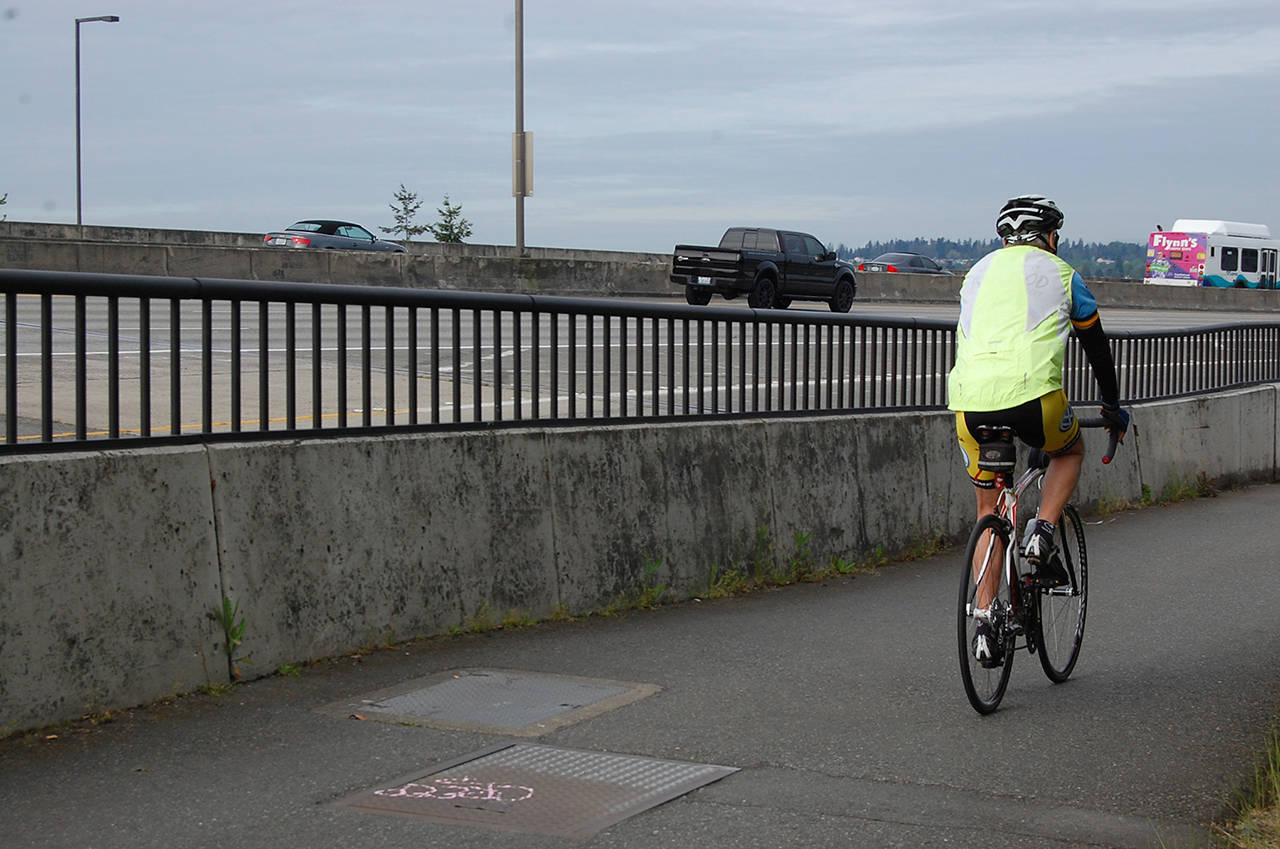Editor’s note: This is the third of an occasional column written by Neighbors in Motion (NIM), a Mercer Island organization dedicated to improving and increasing bicycling and walking on Mercer Island. You may contact NIM at Board@NeighborsinMotion.org. These columns focus on bicycle and pedestrian safety, rules and courtesy with the goal of making our roads safer for everyone.
Q. Do I have to use front and rear lights on my bicycle?
A. Under Washington state law, lights are not required for daytime riding, although NIM recommends using front and rear lights at all times to improve visibility. The most common excuse motorists give after running over a cyclist is, “I didn’t see him/her.”
Under a Washington state statute (RCW 46.61.780) a white front light must be used during “hours of darkness.” Darkness hours are a half hour after sunset until a half hour before sunrise (RCW 46.37.020) — for motorists and cyclists. A cyclist’s light must be visible 500 feet in front. Oddly, that light has no maximum illumination.
During darkness hours, the front light must be a continuous, white beam, not a blinker (RCW 46.37.280). Bicycle shops routinely sell front lights with continuous and blinking functions. Washington law, however, allows flashing lights only by emergency vehicles (aid cars, tow trucks, etc.), and rear, red LED lights on bikes. Front blinking lights on bikes are not allowed. Aside from the illegality, there are several reasons for not using front lights in flashing mode. Some studies have shown blinking lights are distracting to oncoming motorists and cyclists and/or cause depth perception issues. Blinking front lights offer occasional but not continuous illumination of the path, and have even been reported to cause the onset of seizures. The use of continuous front lights makes cyclists more visible and reduces the risk of being hit.
How about rear lights? Rear red reflectors (visible from 600 feet) are required, but rear lights are not (RCW 46.61.780). If used, rear lights must be red and visible from 500 feet. Red rear lights may be continuous or blink. NIM endorses the use of rear lights.
Q. Is it OK for bicycles to ride on sidewalks?
A. In many jurisdictions, including Seattle and Bellevue, cyclists are allowed to use sidewalks, usually provided they yield to pedestrians. According to city personnel we’ve spoken to, Mercer Island allows riding on the sidewalks as well. Still, NIM discourages it unless truly necessary; for example, at heavily trafficked intersections like Southeast 40th and Island Crest Way. Bicyclists on sidewalks must yield to pedestrians and follow the other rules of the road. In other words, no crossing an intersection against a “Don’t Walk” sign. Bicyclists should alert pedestrians they are passing, preferably on the left.
Q. As a motorist, how do I safely — and legally — pass pedestrians or cyclists, especially on the Mercers?
A. Passing is allowed only if it can be done safely. A motorist may not drive in the oncoming lane of traffic to pass a cyclist or walker if there is a bicycle or pedestrian in that oncoming lane, whether on the road, shoulder or bike lane, if it is unsafe to do so. (RCW 46.61.125). NIM endorses Cascade Bicycle Club’s practice of urging motorists to allow 3 feet of clearance between the vehicle and the bicycle/pedestrian. As drivers, we may have been frustrated by slower moving bicycles or pedestrians on the Mercer curves, whom we cannot safely pass. But the inconvenience of going slower has to be weighed against the tragedy of seriously injuring another person.
Q. What is the new law about distracted driving? When does it go into effect?
A. The Legislature passed the new distracted driving law this session, with a provision that delayed enforcement until Jan. 1, 2019. Gov. Jay Inslee vetoed the delayed enforcement so it now will be enforced starting July 23. The new law aims to eliminate “driving under the influence of electronics,” as well as other distractions. It prohibits not just using a cell phone handset and texting, but expands the definition to include shooting or watching video and taking photos with a cell phone. Expect a $136 fine if ticketed for these activities. The fine doubles for second and later offenses. The law also prohibits other driving distractions, such as eating, putting on make-up, and “any activity not related to the actual operation of a motor vehicle” that creates a danger. Those are considered secondary offenses — in other words, the police will not stop a motorist solely for them. Expect a fine of about $100. The law contains exceptions for contacting emergency services, hands-free phones in dashboard cradles, auto Bluetooth operations, and CB radios, among others.
Neighbors in Motion, Mercer Island Steering Committee: James Stanton, Robert Olson, Mark Clausen, Jeff Koontz and Kirk Griffin.




